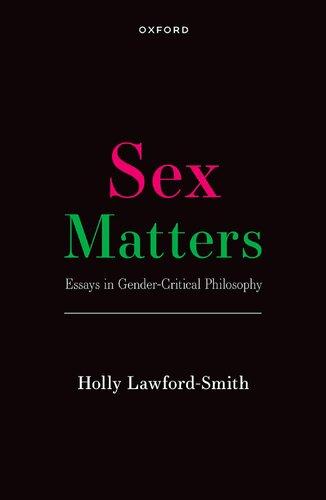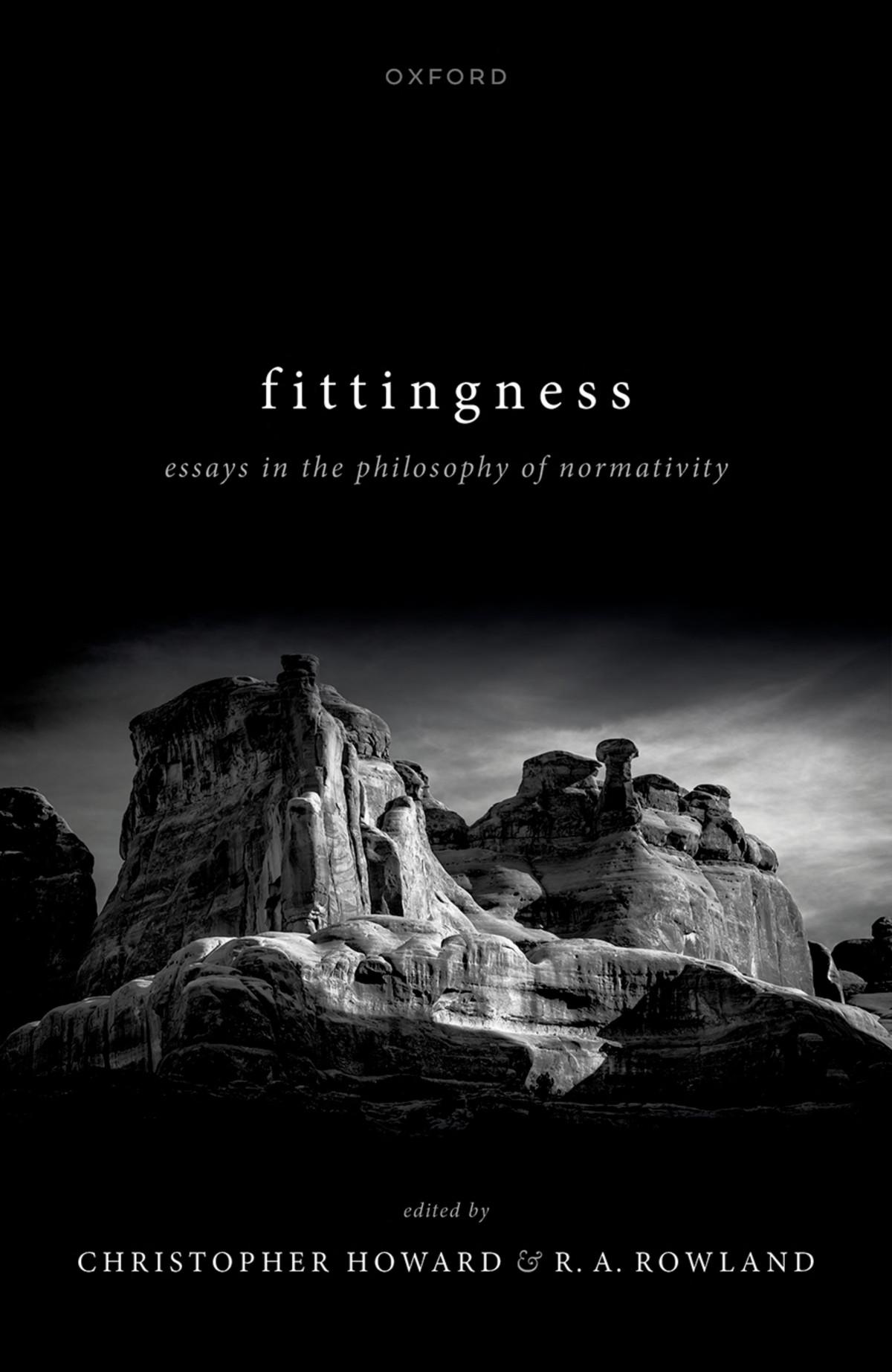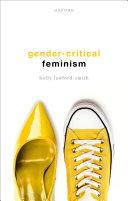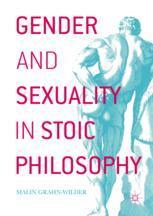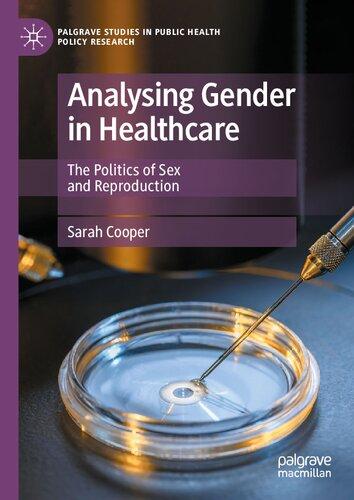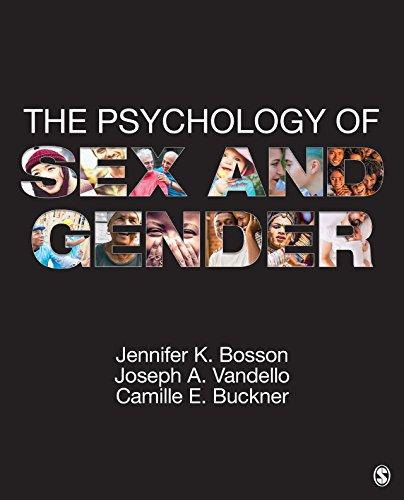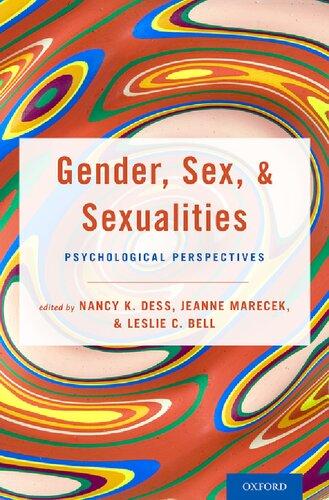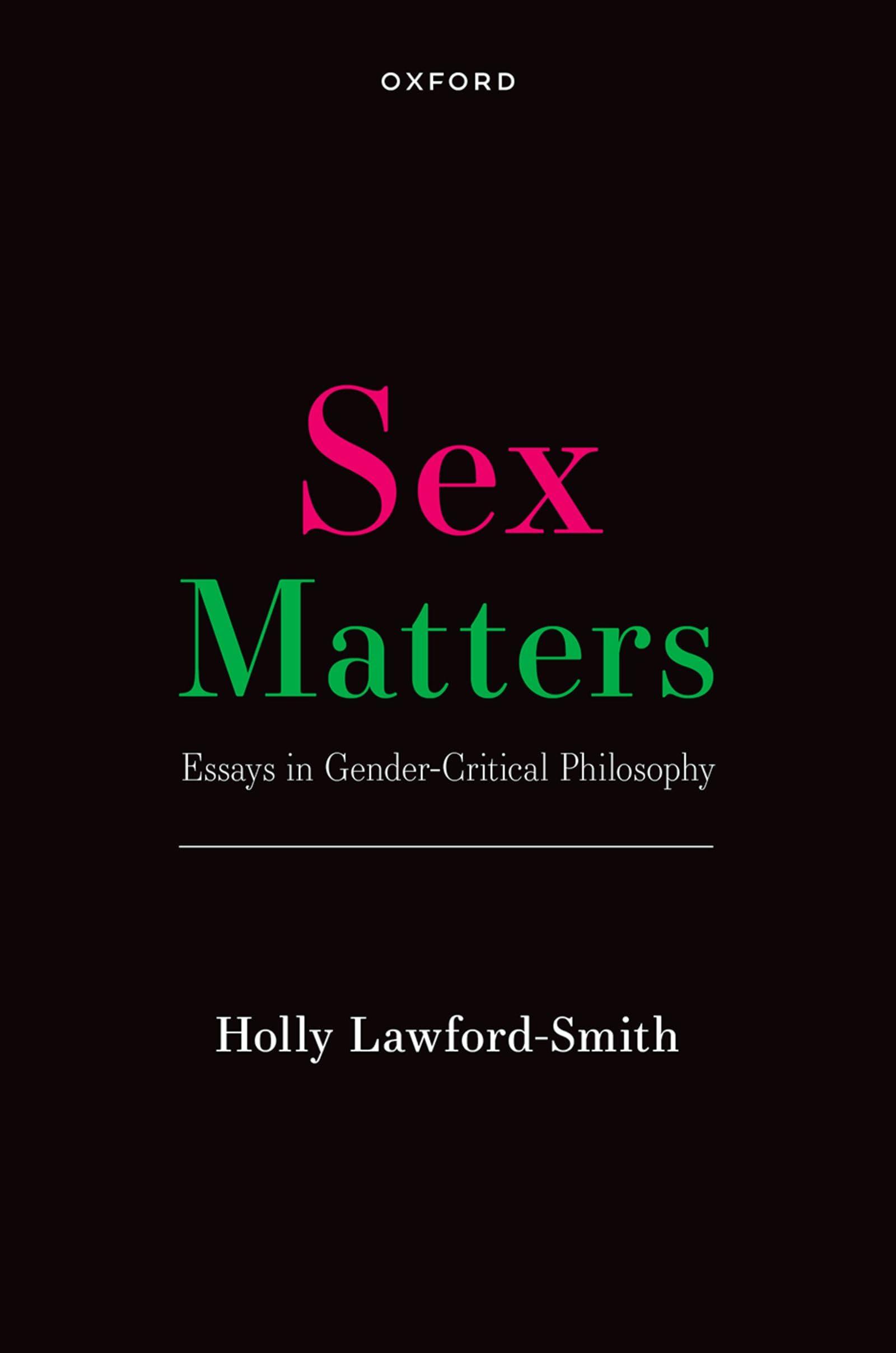Acknowledgements
I’ve had so many conversations with so many people since 2018—when I started writing the first of what would eventually be the chapters of this book—that I’ve lost track. So I apologize to anyone left off the following list! But at the very least, I am grateful to Kate Phelan, Emily Vicendese, William Tuckwell, Sun Liu, Rene Rejon, Stephanie Collins, Cordelia Fine, Jess Megarry, Caroline Norma, Katie Steele, Christian Barry, Colin Klein, Luara Ferracioli, Kieran Oberman, Wolfgang Schwarz, Frank Hindriks, Arto Laitinen, Olle Blomberg, David Schweikard, Nin Kirkham, Rosa Freedman, Kathleen Stock, Mary Leng, Sophie Allen, Elizabeth Finneron-Burns, Rebecca Reilly-Cooper, Miriam Ronzoni, Anca Gheaus, Alex Byrne, Tomas Bogardus, and Callie Burt.
I also benefited from discussions with many audiences in presenting one or the other of these chapters, including at the Australian Association of Philosophy conference in Wollongong in 2019, the Conference on Sex and Gender in Manchester in 2019, and the Legal and Political Theory Seminar at University College London in 2021; at the public events ‘What Is A Woman?’ at the University of Reading in 2019 and Philosophie Mittenmang at the University of Flensburg in 2019; as well as in departmental seminars at the Australian National University, the University of Auckland, Victoria University of Wellington, the University of Sydney, Murdoch University, the University of Western Australia, the University of Melbourne, York University, Lund University, Pepperdine University, Hong Kong University, and the University of West England between 2018 and 2020.
A huge thank you, too, to all the real-name and anonymous radical feminist and gender-critical women of Twitter and Facebook who shared their thoughts with me and provided such vigorous debate when I was new to these issues (and before I was banned from Twitter). Chapter 4, in particular, was written with a lot of input from those women.
Finally, I’d like to acknowledge the work of the women who have published on the conflict of interests between gender identity activism and feminism before me, and whose work has helped to shift the public conversation to taking feminist interests more seriously. Among the first were Gloria Steinem ([1977] 1983, pp. 224-228), Mary Daly (1978, pp. 67-69 & pp. 71-72), Janice Raymond (1979), Germaine Greer (1989; 1999, pp. 80-93 & p. 422), and Julie Bindel (2004); and
more recently Sheila Jeffreys (2014), Ruth Barrett (Ed.) and contributing authors (2016), Michelle-Moore and Heather Brunskell-Evans (Eds.) and contributing authors (2018; 2019), Abigail Shrier (2020), Lisa Selin Davis (2020), Sarah Pedersen (2020), Kathleen Stock (2021), Julie Bindel (2021), Helen Joyce (2021), and Kara Dansky (2021).1
Permissions
‘Ending sex-based oppression: Transitional pathways’, reprinted by permission from Springer Nature Customer Service Centre GmbH: Springer Nature Philosophia 49, pp. 1021–41, Holly Lawford-Smith, © 2021.
References
Barrett, Ruth (Ed.). Female Erasure (California: Tidal Time Publishing, 2016).
Bindel, Julie. ‘Gender benders, beware’, The Guardian, 31st January 2004. Online at <https://www.theguardian.com/world/2004/jan/31/gender.weekend7>
Bindel, Julie. Feminism for Women (London: Constable, 2021).
Daly, Mary. Gyn/Ecology: The Metaethics of Radical Feminism (London: The Women’s Press, 1978).
Davis, Lisa Selin. Tomboy (New York: Legacy Literature, 2020).
Dansky, Kara. The Abolition of Sex (New York: Bombardier Books, 2021).
Greer, Germaine. ‘On why sex-change is a lie’, The Independent Magazine, 22nd July 1989, archived at <https://twitter.com/terfcitations/status/1550465693073567744>
Greer, Germaine. The Whole Woman (London: Black Swan, 1999).
Jeffreys, Sheila. Gender Hurts (Abingdon: Routledge, 2014).
Joyce, Helen. Trans: When Ideology Meets Reality (London: Oneworld, 2021).
Moore, Michele, and Brunskell-Evans, Heather. Transgender Children and Young People: Born in Your Own Body (Newcastle upon Tyne: Cambridge Scholars Publishing, 2018). Moore, Michele, and Brunskell-Evans, Heather. Inventing Transgender Children and Young People (Newcastle upon Tyne: Cambridge Scholars Publishing, 2019).
Pedersen, Sarah. The Politicization of Mumsnet (Bingley: Emerald Publishing, 2020).
Raymond, Janice. The Transsexual Empire (New York: Teachers College Press, [1979] 1994).
Shrier, Abigail. Irreversible Damage (New Jersey: Regnery Publishing, 2020).
Steinem, Gloria. Outrageous Acts and Everyday Rebellions (New York: Henry Holt, 1983).
Stock, Kathleen. Material Girls (Great Britain: Fleet, 2021).
1 For a list of recent journal articles in philosophy and related disciplines, see <https://hollylawfordsmith.org/gcf-bibliography/>
Preface
At the time this book goes to press in 2023, there are already thriving grassroots social movements of women reclaiming their sex-based rights in many countries of the world. The most prominent, and most successful, sex-based rights movement is in the United Kingdom, but movements elsewhere are growing in strength. I wrote about how I understand the theory and activism of this movement in my book Gender-Critical Feminism (2022). In that book I noted that this movement for sex-based rights, popularly known as gender-critical feminism, has a disagreement with mainstream or socially dominant conceptions of feminism in multiple areas, including about prostitution and pornography, about transgender issues, and about intersectionality. One of my arguments in that book was that while gender-critical feminism is ceaselessly positioned by its detractors as being about trans issues—indeed, as being essentially ‘anti-trans’— gender-critical feminism’s disagreement with gender identity activism (the activism of some members of the trans community and their allies) is actually just an implication of its core commitments to a sex-based feminism, and not its central preoccupation. I predicted that that preoccupation will pass when the urgency of the disagreement passes, hopefully because a reasonable compromise has been reached rather than because women’s interests have simply lost out. I have pursued those three main areas of gender-critical feminism’s disagreement with mainstream feminism into separate work (on intersectionality see Lawford-Smith and Phelan 2022; on prostitution and pornography see Lawford-Smith and Pepper, manuscript; on trans issues see Lawford-Smith 2021 (republished here as Chapter 1), and Hauskeller and Lawford-Smith 2022). In this book I pursue in greater detail what I see as the conflict of interests between gender identity activism and gender-critical feminism, in particular in the areas of disagreement about what gender is, disagreement over access to women-only spaces and (relatedly) to the legal status of being a woman, and disagreement over the status of gendercritical speech (especially where it asserts that core commitments of gender identity activism are false).
Each chapter of this book is an independent essay, so there is no need to read in order, or to read everything. I have organized the chapters into three parts: the first about theory, the second about issues in law and policy, and the third about speech. Most of these chapters are defensive. A newer understanding of gender as identity is displacing the older understanding of gender as caste, to the detriment of radical and gender-critical feminists, for whom gender as caste is a key political concept. Chapters 1 and 2 address competing understandings of gender and
visions for gender-related liberation. Radical and gender-critical feminists have been told that ‘trans women are women!’ and that it is wrong-headed, exclusionary, hateful, or bigoted to deny that, or to deny transwomen entry into womenonly spaces. Chapter 3 takes up whether it is wrong-headed to deny it; Chapters 4, 5, and 6 take up whether it is exclusionary, hateful, or bigoted to deny transwomen entry into women-only spaces. Chapter 4 focuses on the question of women-only spaces broadly construed (all/any such spaces), while Chapter 6 focuses on bathrooms in particular. Chapter 5 is about the social and legal means that might be deployed to moderate access to women-only spaces. Finally, radical and gender-critical feminist theory and activism has been accused by its detractors of being hateful and/or harmful, in particular to transgender and nonbinary people. Chapters 8 and 9 take up those accusations directly, working through whether gender-critical speech is plausibly either hate speech, or harmful speech. Chapter 7 takes up the term ‘TERF’, routinely used against radical and gendercritical feminists, and asks whether it counts as a slur.
These chapters do not cover all the interesting points of conflict between gender identity activism and feminism. To cover all of these would require a very big book. In the section on speech, I could have talked about the current practice of replacing sex-specific language with gender-neutral language, and I could have talked about the ethics and politics of neo-pronouns and ‘misgendering’. In the section on policy, I could have talked about ways of protecting trans and genderdiverse people from discrimination and unequal treatment that don’t infringe on the interests of women and lesbian, gay, and bisexual people, for example legal protection of gender-expression and third spaces. I could have talked more about the harmfulness of medically and surgically transitioning children and adolescents, expanding on my arguments in (Lawford-Smith 2022, Chapter 5). In addition to, or instead of, talking about bathrooms in particular in Chapter 6, I could have talked about women’s prisons (Biggs 2022), or women’s sports (Devine 2021; Pike 2021; Hilton and Lundberg 2021; Pike et al. 2021; Imbrisevic 2022), or women’s drug and alcohol addiction or sexual trauma recovery groups, or women-only hospital wards, or any other of the important women-only spaces. I could have had a section on the ethics of transition, and talked about ‘trans widows’, women whose marriages are ended and children impacted when their husbands transition, or about the balance of interests between those males who wish to transition to live as women, and the women whose feminist politics are best served by a sex-based understanding of what a woman is. In short, there are many interesting things to talk about in this area, and the fact that I chose the things I did should not be taken to suggest that these other topics aren’t equally important. Luckily, more people are managing to publish in this area in the last couple of years,1 so it is my hope that in the coming years there will be discussion of all these issues.
1 See the last paragraph of the Acknowledgements for references.
References
Biggs, Michael. ‘Queer theory and the transition from sex to gender in English prisons’, Journal of Controversial Ideas 2/1 (2022), pp. 1–21.
Devine, Cathy. ‘Female sports participation, gender identity and the British 2010 Equality Act’ Sport, Ethics and Philosophy, 15 (2021), pp. 1–23.
Hauskeller, Michael, and Lawford-Smith, Holly. ‘Gender’, in Michael Hauskeller (Ed.) The Things That Really Matter: Philosophical Conversations on the Cornerstones of Life (London: UCL Press, 2022).
Hilton, Emma, and Lundberg, Tommy. ‘Transgender women in the female category of sport: Perspectives on testosterone suppression and performance advantage’, Sports Medicine 51 (2021), pp. 199–214.
Imbrisevic, Miroslav. ‘Patriarchy in disguise: Burke on Pike and world rugby’, Sports, Ethics and Philosophy, 16 (2022), pp. 1–19.
Lawford-Smith, Holly. Gender-Critical Feminism (Oxford: Oxford University Press, 2022).
Lawford-Smith, Holly. ‘Ending sex-based oppression: transitional pathways’, Philosophia 49 (2021), pp. 1021–41.
Lawford-Smith, Holly, and Phelan, Kate. ‘The metaphysics of intersectionality revisited’, Journal of Political Philosophy 30/1 (2022), pp. 166–87.
Lawford-Smith, Holly, and Pepper, Angie. Is It Wrong to Buy Sex? Manuscript, as at April 25th 2023.
Pike, Jon. ‘Safety, fairness, and inclusion: transgender athletes and the essence of rugby’, Journal of the Philosophy of Sport 48/2 (2021), pp. 155–68.
Pike, Jon, Hilton, Emma, and Howe, Leslie. ‘Faster, higher, stronger: The biological and ethical challenges to including transgender athletes in women’s sports’, MacdonaldLaurier Institute, December 2021. Online at <https://macdonaldlaurier.ca/biology-fairnesstrans-inclusion-sport-paper/>
Some Notes on Language
In this book, ‘male’ and ‘female’ will be used in the standard way, to refer to (biological) sex. I take male to be the sex that, all going well, produces small mobile gametes (sperm), and female to be the sex that, all going well, produces large immobile gametes (ova/eggs). ‘All going well’ here means something like, bracketing certain issues like endometriosis that can create problems for typical reproductive functioning. This is not the only way to understand sex, but I think it is the best way. Some people contest the meaning of ‘male’ and ‘female’, and prefer to use them interchangeably with ‘man’ and ‘woman’ to refer to one or more of gender identity, gender role, or position in a social hierarchy. I won’t be using them in that way, for the primary reason that there are no other sex terms available, and a sex-based feminism needs terms to refer to sex.
I’ll try to be as clear as possible throughout the book that the question of which terms we should use to refer to sex and gender is separate from the question of what the correct understandings of sex and gender are. I am assuming an understanding of sex, but one of the things at issue in this book is what the correct understanding of gender is. We could have that argument, and settle it, without settling what the existing sex and/or gender terms should refer to. For example, perhaps the gender-critical feminists are right and gender is a caste system that uses sex to sort people, but it’s best to refer to as a woman anyone who feels that the word ‘woman’ describes them. Or, perhaps the gender identity activists are right and gender is one’s subjective sense of oneself in terms of masculinity or femininity (or neither, or both), but it’s best to reserve the word ‘woman’ for those who have been treated in a particular way since birth because of their sex. There might not be enough words for all the things we care about. I am primarily interested in the world, not the words we use to talk about the world, although I am concerned that we have some words rather than no words for that project. For that reason, I’m not assuming in this book that ‘woman’ means ‘adult human female’. I’ll be clear in each chapter whether I’m using the terms ‘female’ and ‘woman’ interchangeably, or whether I’m considering ‘woman’ as having alternative meanings.
There’s a more subtle disagreement over what ‘woman’ means that is separate from the issue of whether transwomen are women. That is the issue of whether ‘woman’ is a success term. Because I’m interested in this book in the differential socialization of the sexes, we’ll need a way to refer to a female as she really is (or could be), compared to a female person as she has been made to be. One way to mark this distinction doesn’t involve the word ‘woman’ at all: we can use ‘sex’ for the way she really is and ‘feminine’ for the way she has been made to be (or at
least, has been subject to attempts to make her be). This is one version of a sex/ gender distinction in which ‘female’ tracks sex and ‘woman’ tracks gender. ‘Feminine’ is appropriate because it’s an adjective; it describes a way that female people can be (made to be). But some feminists instead use ‘woman’ where I have used ‘feminine’, so that a female person successfully made feminine becomes a woman. When Simone de Beauvoir said that one is not born, but becomes, woman, this is what she meant.
Even more confusingly, some feminists think sex itself (at least as we currently understand it) is a way that human individuals are made to be, rather than a way they really are, in which case we should just use ‘human’ or ‘person’ for her as she really is (or could be), and all/any of ‘feminine’, ‘woman’, or ‘female’, for ways she has been made to be. The extension of each term is the same, picking out female people. But their intensions are different. If ‘woman’ names the class of people made feminine, and we stop making people feminine, there will be no women. Similarly, if ‘female’ names the humans made into one of the two socially constructed sex kinds, and we stop socially constructing sexes, there will be no females. I’ll try to be clear when we’re dealing with an account that uses ‘woman’ as a success term in this way.
‘Transgender’ is often used as an umbrella term to include both (binary) trans and nonbinary identities. I find it conceptually unhelpful to use as an umbrella term one of the identities that the umbrella covers, so I’ll generally use ‘transgender’ to mean a male person who identifies as either or both of female/woman, or a female person who identifies as either or both of male/man. (Some gender identity activists prefer to say ‘person born male’, or ‘person assigned male at birth’, either because they countenance the possibility of changing sex, or because they use ‘male’ and ‘female’ interchangeably with ‘man’ and ‘woman’ for current identity. I won’t be doing that, because I don’t countenance the possibility of changing sex, and because as already noted, we need terms to refer to sex). In one chapter I say ‘observed male at birth’ or ‘observed female at birth’, but that is because I’m talking about the option of changing one’s legal sex, and this is something that an intersex person, observed as being one sex but in fact another, might want to do. So we need the distinction there between being a sex, and being observed to be a sex (where observation can, occasionally, be mistaken).
‘Transwoman’, then, refers to a male who identifies as either or both of female/ woman, ‘transman’ refers to a female who identifies as either or both of male/ man. There is a political issue about a space in these words, namely, the difference between ‘trans woman’ and ‘transwoman’. The first suggests that ‘trans’ is a way for someone born male to be a woman, like ‘tall’ woman or ‘angry’ woman. (The qualification is necessary, because ‘trans’ is clearly a way to be a woman, one way or the other. If it’s not a way for someone born male to be a woman, then it’s a way for someone born female to be a man). The second suggests that ‘transwoman’ is its own distinct category. Gender identity activists prefer the former, and radical and gender-critical feminists prefer the latter. Both beg the question when
whether transwomen are women is at issue, which it sometimes will be in this book. If the question has to be begged one way or the other, I’ll beg it in the direction I think is correct. So I use ‘trans women’ when quoting or referring to the claims of gender identity activists, and ‘transwoman’ otherwise.
‘Nonbinary’ in my usage means a person of either sex who identifies as neither man nor woman, and in some (but not all) cases also as neither male nor female. Sometimes I will need to specify the sex of the nonbinary person, so I will say ‘female nonbinary person’ or ‘male nonbinary person’.
I will often talk in terms of gender identity rather than in terms of being trans, taking gender identity to be the trait or protected attribute of interest that trans people have.
I will occasionally be using ‘woman’ in a way that is neutral about disagreements over who is included in this category, and in that case when I need to refer to women-by-way-of-femaleness and women-by-way-of-identity I will use ‘natal women’ to refer to women-by-way-of-femaleness.
Finally, intersex conditions are not at issue in this book (they are mentioned only very briefly in Chapter 5 to make clear that my arguments against change of legal sex on the basis of gender identity are not intended to prevent change of legal sex in cases where an intersex person’s sex has been incorrectly recorded). There are a number of plausible ways to understand sex, and most of them have no difficulty in classifying intersex people, and moreover, in classifying intersex people as the sex they understand themselves to be. There are very rare cases where a theory of sex may classify someone as other than they were ‘assigned at birth’ and/ or understand themselves to be. It makes no difference, for my purposes in this book, whether we understand the ‘sex’ in ‘sex-separated spaces’ to be the allgoing-well production of large or small gametes; progress down a developmental pathway to producing large or small gametes; having a ‘Y’ chromosome or not; or a homeostatic property cluster of primary sex characteristics (on the last three see Stock 2021). It also wouldn’t matter, for my purposes in this book, to add the disjunct ‘or assigned ____ (male/female) at birth’ every time I mention a sex (so e.g. ‘female or assigned female at birth’), to ensure that those with the very rare intersex conditions that would cause a plausible theory of sex to misclassify them by their own lights were included within the appropriate sex category. At issue is not whether intersex people assigned female at birth but technically male can use women-only spaces. At issue is males with ‘woman’ gender identities, and they don’t tend to be intersex. Intersex issues are a red herring when it comes to the issues of Chapters 4–6 of this book.
References
Stock, Kathleen. Material Girls (London: Fleet, 2021).
Ending Sex-Based Oppression
Transitional Pathways1
1.1 Gender norms
From a radical feminist perspective, gender is a cage.2 Or to be more precise, it’s two cages. The cages trap people with the biological sex ‘male’ and ‘female’ respectively. Those of the male sex are trapped by one set of gender norms— norms of masculinity—and those of the female sex are trapped by another— norms of femininity. Influential feminists have used the metaphor of a cage in connection with gender, including Marilyn Frye in her famous essay ‘Oppression’, as well as Mary Wollstonecraft and Shulamith Firestone (Frye 1983; Wollstonecraft [1792] 2017, p. 77; Firestone 1970, p. 25).3 The metaphor helps to express that gender is something external, and confining.
Gender—which for the rest of this chapter means gender norms—is social expectations about a person’s behaviour applied to their sex. Such expectations constrain the things that people can do and the ways that they can be, from who they date, how they present themselves, the way they move, the way they relate to other persons, the kinds of jobs they have, their passions and pursuits, the sports they play, and so on. For example, the gender norms applied to female people include androphilia (attraction to males), feminine presentation, contained movements, being warm and nurturing toward others, working in care- and people-focused jobs, pursuing e.g. dance or theatre rather than e.g. modelbuilding or astronomy, playing e.g. netball rather than e.g. rugby, and so on.
Gender norms are one kind of social norm. Social norms are marked by the fact that conformity is dependent upon others’ expectations. Non-conformity can be expected to bring social sanctions (Bicchieri 2016, pp. 35–40). The cage metaphor is appropriate, because gender norms are heavily policed compared to some other types of social norms. Compare queuing: when you push to the front of a
1 This essay was first published in Philosophia 49 (2021), pp. 1021–42, and is reprinted here (with minor edits) with the permission of the journal.
2 The aim of this chapter is not to defend the conception of gender as norms against the alternatives (on which more in Chapter 2), but to use one plausible conception of gender to explore the issue of ending sex-based oppression.
3 Frye would likely resist my application of the metaphor to men, given that men are not oppressed. Individual men, and sub-groups of men, may be oppressed as members of other social groups, but men are not oppressed as men.
queue, you may hear some muttering from those behind you; someone may even demand that you go to the back of the line. The social sanctions associated with violations of the queuing norm are minor. When you are a boy who wears girls’ clothing, however, you may be harassed, verbally abused, and even physically assaulted.
It would be bad enough if these norms only pushed people into gender roles—the social roles resulting from conformity to gender norms—that were ‘equal but different’. But they do more than that. They push people into roles that are unequal. Men dominate, subordinate, and oppress women. Femininity is constructed in a way that legitimates and facilitates sexual violence (MacKinnon 1987, pp. 85–92). Science is wheeled in to justify sex inequality (e.g. talk of sexed brains, or the difference testosterone makes—see discussion in Fine 2010; 2017), and violence and other forms of social policing work to maintain it (Manne 2017).
If genders are cages, then surely we want to let people out. Being less constrained in our choices is something we all have reason to want. Many normative theorists in recent years have emphasized the importance of the capability to do and be many different things (see e.g. Nussbaum 2011; 2000). At the very least, we should want an end to sex-based oppression. While female people are the largest group to benefit from an end to sex-based oppression, other groups benefit too, including gay, lesbian and bisexual people (because the gender norm of heterosexuality disappear); gender non-conforming people (because the gender norms of female people presenting in a feminine way and male people presenting in a masculine way disappears); and trans and nonbinary people (because if there are no gender norms, then there is no ‘incongruence’ between sexed bodies and gender expressions).4 But what is the best route to ending sex-based oppression?
Answering that question is the aim of this chapter. I’ll compare four candidate ‘transitional pathways’—from the world as it actually is to a world with substantially less, or no, sex-based oppression—with a view to considering how each relates to the ultimate end of eliminating sex-based oppression. Should we open the doors to the cages, so that people can move freely between them, but leave the cages themselves in place? Should we add more cages? Should we make the cages bigger, so that people have a lot more room to move around inside them? Or should we dismantle the cages, so there are no more gender norms at all?
These are questions in non-ideal theory, about the pathways from the actual world as it is currently, where genders are cages, to the ideal world, whether that is gender abolitionist or merely gender revisionist (for a useful overview of ideal and non-ideal theory, see Valentini 2012). But because ideal worlds include their
4 For a critical discussion of ‘incongruence’ as used in medical definitions of being trans, see (Vincent and Jane, forthcoming), and the collection of commentaries in the same issue of Australasian Philosophical Review.
histories, the question of which pathway to take is crucial to establishing which is the ideal world. It also helps to make clear that the gender abolitionist pathway is high ambition, leading to liberation for many more people, while the gender revisionist pathways, particularly the nonbinary pathway, are low ambition, leading only to minor changes to the status quo.
This discussion should be of interest to radical and gender-critical feminists (and their allies) committed to gender abolitionism; to transgender people (and their allies) committed to revision of the existing gender binary without abolishment; to nonbinary people (and their allies) committed to resisting the gender binary; and indeed to all gender-conforming and gender non-conforming people who have thought about possible tensions between sex-based oppression and identities that depend on the existence of gender norms in some form or other.
1.2 A world without sex-based oppression, and transitional pathways
Let’s return to the metaphor of gender as two cages. It’s easy enough to imagine ways to make things better. Here are four possibilities, some of which I’ve already mentioned:
(1) Open the cage doors
(2) Add a new cage
(3) Add escape hatches to the cages
(4) Make the cages bigger
A world where the cage doors are open would be better, because then at least people would have a choice about which cage to be in. They could choose to move from the one cage to the other, and perhaps even to move freely between them. In the world where gender is two cages but the cage doors are open, sex and femininity/masculinity will have been fully decoupled. At the moment to be female is to be put in the ‘feminine’ cage; in a world with open cage doors, a female person would get the choice whether to be put in the ‘feminine’ cage or the ‘masculine’ cage.
A world where there’s an additional cage, which people from either of the two other cages are free to enter, would also be better, because again this would give them a choice about which cage to be in. In principle one could add in any number here, although at a certain point, the question of whether these additional cages are still gender, rather than e.g. personality, will emerge. At the moment to be male is to be put in the ‘masculine’ cage; in a world with a third cage, the male could opt out of the cage of ‘masculinity’ and into the new cage.
A world where the cages had escape hatches would also be better, because then anyone who wasn’t comfortable in the cage they were in could leave it. The difference between (1) and (3) is that (1) would let male people leave the ‘masculine’ cage and join the ‘feminine’ cage, let female people leave the ‘feminine’ cage and join the ‘masculine’ cage, and in principle let both male and female people go back and forwards between the cages; while (3) would only let female people leave the ‘feminine’ cage, and masculine people leave the ‘masculine’ cage. By escaping, they come to be in no cage, rather than the other cage (as in (1)), or a new cage (as in (2)). This gives some people more freedom, and it transforms the status of the cages: if it’s viable for everyone to take the escape hatch, and people choose to remain in the cage of their own volition, they are not accurately described as ‘trapped’ or ‘constrained’ or ‘imprisoned’. The cages become mere options.
A world where the cage doors remain shut but the cages are bigger would also be better, because there would be fewer constraints on the ways that people of a particular sex could be, or the things that people of a particular sex could do. The bigger the cage, the more ways there are of being a man, or a woman. There may be as many ways—or more—of being a man as there are men; as many ways—or more—of being a woman as there are women. If there are many ways to be a woman, but they overlap either not at all, or only in part, with the ways there are to be a man, and vice versa, then there’s a lot more freedom, but there are still gender norms.
There are versions of (3) and (4) which amount to the same thing: getting rid of the cages entirely. If everyone takes the escape hatch then no one is caged, and if it’s viable for everyone to take it then some people remain in the cage but are not technically ‘caged’ (because they are free to leave). If the two cages become so big that they overlap perfectly, then being caged is equivalent to not being caged. (Building a wall around the whole world wouldn’t make it a prison). The ways of being a woman would overlap perfectly with the ways of being a man. A world where there are simply no cages would be better than the world where there are two but it’s possible for some to escape, and the world where there are cages that are bigger (less constraining) than they are now, but still constraining. No cages at all means maximal freedom: male and female people are free to do and be whatever they want to be. The world without cages achieves the radical feminist goal of gender abolitionism (sometimes also called ‘gender annihilation’) (see e.g. Atkinson 1974, pp. 42–3; Firestone 1970, pp. 184–7; Frye 1983, pp. 35–7; The Feminists [1973]).
So we have four transitional pathways, all of which would take us to a world that is better than the actual world, at least when it comes to sex-based oppression. We don’t yet know which of these would be the best pathway. So long as the best pathway is accessible to us, we should take it (if it were inaccessible, and we
knew that, then we would be justified in taking another). One way we can start to think about which is the best is by thinking about the tradeoffs each pathway involves compared against the others.
Before I get onto that, let me note emphatically that nothing I say below is intended as a criticism of current gender norm-violating (or ‘gender nonconforming’) people. This is a speculative chapter about pathways to a world without sex-based oppression, and its observations depend on substantial numbers of people taking up the proposed strategies. In the actual world, people have their own reasons for violating gender norms, including being gay, being transgender or nonbinary, alleviating gender dysphoria, alleviating discomfort with aspects of one’s physical sex, expressing opposition to gender norms, expressing opposition to ‘the gender binary’ (Dembroff 2018), and self-expression. In addition, some people may simply violate gender norms without any intention.
Most of these reasons would not be undermined by a philosophical discussion concluding that widespread adoption of transgender, third gender, or nonbinary identities is not the best pathway to a world without sex-based oppression. (The political reasons, however, would be undermined.) But all such reasons might be bolstered by a philosophical discussion concluding that transgender, third gender, or nonbinary identities are part of the best pathway. (Wouldn’t it be satisfying for a gender identity activist to be able to say to a so-called ‘trans-exclusionary’ radical feminist, ‘I’m doing my part in bringing about the world that you want?’)
To translate the metaphorical cages into real strategies for political change, we have: changing between the two genders (‘transgender pathway’); opting into a third (fourth, etc.) gender category (‘third gender pathway’);5 opting out of binary gender (‘nonbinary pathway’) without opting into a third gender category; and rejecting gender without repudiating being a female/woman, or male/man (‘gender abolition pathway’). Which of these is the best strategy? Which is the transitional pathway to the best world? Here is the list, so we can keep track:
(1) Open the cage doors → Transgender pathway
(2) Add a new cage → Third gender pathway
(3) Add escape hatches to the cages → Nonbinary pathway
(4) Make the cages bigger → Gender abolition pathway
What are the ‘limit cases’ for each pathway? I’ll assume that for the transgender pathway, it is when half of all female people are subjected to norms of masculinity, and half of all male people are subject to the norms of femininity.6 For the
5 I’ll use ‘third’ in the rest of the paper, but this should be taken to mean any number of genders greater than two.
6 B. R. George and R. A. Briggs (manuscript) make a similar assumption when they explore the ‘liberalization’ of gender categories on trans twin earth: ‘Through all these changes the [gender] roles themselves remain largely intact, but the demographics of the two worlds shift until there is no
third gender pathway it is when there are sufficiently many gender categories that no one feels trapped, and membership in these categories is freely chosen. For the nonbinary pathway, it is when everyone has repudiated being either female/ women or male/men, so there are no people left for gender norms to be applied to. For the gender abolition pathway, it is when no one has repudiated being female/women or male/men, and yet gender norms are not applied to anyone. Some people may still choose the behaviours historically associated with their sex, but they would not do so because of gender norms. What we currently describe as gender non-conformity would just be normal variation between persons, and there would be a lot more of it.
The pathways introduced above are not mutually exclusive. In the actual world, they are all in play. But as political strategies to end sex-based oppression, they will be most effective if there is momentum around one in particular. That is because if the non-binary pathway is successful it pulls the rug out from under the transgender pathway; if the transgender pathway is successful it precludes the gender abolition pathway. (Still, in Section 1.3 I will briefly consider hybrid pathways). Each pathway comes with costs, and these costs impact upon different groups.
I think that these differential costs partly explain some of the heat around debates over proposed (and in some cases actual) changes to the recognition of sex/gender under the law, for example the 2018 consultation over the Gender Recognition Act (2004) in the UK, debate over the Human Rights (Gender Identity) Amendment Bill in New Zealand in 2019, and the quiet passing of the Births Deaths and Marriages Registration Amendment Act (2019) in Victoria, Australia, in 2019.7 Gender-critical feminists8 have argued that there’s a tension, brought out by these proposed (and actual) legal changes, between advancing the interests of transgender, third gender, and nonbinary people, on the one hand, and advancing the interests of females/women on the other (Burt 2020; Asteriti and Bull 2020; Murray and Hunter-Blackburn 2019; Stock 2018a; 2018b; ReillyCooper 2016a; Lawford-Smith 2019a; 2019b; 2019c). Comparing these differential costs can help in figuring out which is the best pathway, and whether any pathway allows us to escape sex-based oppression entirely.
I’ll take them in reverse order, starting with the gender abolition pathway, then moving on to the nonbinary pathway, the third gender pathway, and finally the
correlation at all between gender role and biological sex characteristics. [ . . . ] roughly half of all blokes and half of all grrrls possess typically female biology’ (George and Briggs, manuscript., p. 18). (‘Blokes’ is the name they give to the previously male-associated gender category, ‘grrrls’ to the previously female-associated category).
7 The latter, which came into force in May 2020, makes legal sex a matter of statutorily declared belief.
8 Gender-critical feminists, following radical feminists, believe in a sex-based analysis of women’s oppression; and in contrast to some radical feminists, also take a sex-based approach to her liberation. See further discussion in (Lawford-Smith 2022, Chapter 3).
transgender pathway. The gender abolition pathway is, as its name suggests, gender abolitionist, while the nonbinary, third gender, and transgender pathways are merely gender revisionist. This means that in assessing them, we have to think not only about what gender is, but what gender should be (if anything at all).
1.2.1 The gender abolition pathway
Along the gender abolition pathway, everyone repudiates their gender, understood as the set of norms they are subject to on the basis of their sex (masculinity for males/men, femininity for females/women). But no one repudiates their sex. No female/woman claims that she is not female/woman, and no male/man claims that he is not male/man. People do whatever they like, which means many women violate the norms of femininity and many men violate the norms of masculinity. This does not require that everyone violate all such norms. Feminine is a way to be female just as much as it is a way to be male, and the same is true for masculinity. So there will remain some feminine women and some masculine men. But these combinations will not be seen as normative. At the ‘end’ of this pathway, when we map the full spectrum of human behaviour, we will find substantially less clustering according to sex than we see now.
This does not require accepting a ‘blank slate’ view, presuming that in the debate over nature/nurture/nature-via-nurture the correct diagnosis of all sex differences is ‘nurture’. It requires only to say that whatever proportion of ‘femininity’ and ‘masculinity’ have been constructed through early childhood socialization, culture, and social sanctions/rewards, that will disappear—and the interests previously gendered will be distributed more evenly across the population. This is compatible with there remaining some interests that relate more directly to sex, for example things to do with reproductive function, the specifics of sexed bodies, and sexual orientation/attraction.9
So far this is just the familiar feminist distinction between sex and gender,10 where we get rid of gender by getting rid of sexist assumptions about how persons of one or the other sex should be and what they should do. It is distinctive because of its focus on ways of doing and being, rather than on identity labels. By violating gender norms, it hopes to erode and dismantle those norms, to leave people to be however they would be without them.
Which social groups does the gender abolition pathway involve costs for? Understanding this will allow us to assess the desirability of the pathway on its
9 As Marilyn Frye put it: ‘we do not know whether human behaviour patterns would be dimorphic along lines of chromosomal sex if we were not threatened and bullied; nor do we know, if we assume that they would be dimorphous, what they would be, that is, what constellations of traits and tendencies would fall out along that genetic line’ (Frye 1983, p. 36).
10 Cf. Bogardus (2020) on whether there really is such a distinction.
own merits, and then later to make tradeoffs between the four pathways. The first group who there are costs for will be those who wish to repudiate their sex. Because the violation of gender norms must be undertaken without repudiation of one’s sex, we’ll need to know how many of the people who currently repudiate their sex would still want to do that when their sex did not constrain them in any way. All those who are transgender, nonbinary, or third gender because of a gender dysphoria that is specifically about their bodies are likely to still want to reject their sex.
Those who are transgender, nonbinary, or third gender for reasons not specifically connected to their bodies are not likely to still want to reject their sex. It strikes me as plausible—although it’s ultimately an empirical question—that the wider the scope of what it means to be a female person, or a male person, the less people would feel the need to repudiate their sex.
This is a point that many people critical of surgical transitioning (the undergoing of sex reassignment surgery) have made: we should change society so that it’s more accommodating of difference, rather than change physically healthy individuals so that they can fit into the other of the small cages society currently has to offer (see e.g. discussion in Raymond 1979; Vincent and Jane, forthcoming). (Again, this is not intended as a criticism of people who undergo such surgery; it’s intended as a criticism of gender norms, and the extent to which such people may not feel the need to have surgery if we managed to dissolve those norms).
This pathway will also be costly for transgender people who feel strongly that they are, or ought to be, subject to the gender norms of the other sex. Here’s transwoman Andrea Long Chu, in an interview with Anastasia Berg for The Point Magazine:
The TERF position that I would through transition be solidifying and reproducing normative gender roles—I find that argument completely convincing. I mean I think it’s completely right, because I know that it’s right, because it’s the thing that I want! Like, I’m not interested, actually, not at all interested in dismantling gender (Long Chu and Berg 2018).
(The acronym ‘TERF’ that Chu uses in referring to ‘the TERF position’ is one gender identity activists use to refer to radical feminists, the ‘—RF’ in the acronym, who acknowledge transwomen to be male and thus justifiably excludable from female-only spaces (the ‘TE—’ stands for ‘trans-exclusionary’). Radical feminists themselves do not self-describe with this term, and many consider it to be a slur (Allen et al., manuscript; see also Chapter 7 of this volume)).
Normative gender roles are built out of conformity to gender norms, so there cannot be roles without norms. The fulfillment of Long Chu’s desires depends on gender norms. So the abolition of gender frustrates those desires.
Costs to a third social group depend on the implications, in the early stages of the pathway, of others’ violation of gender norms. Consider two female people, and imagine that one conforms to gender norms while the other violates gender norms without denying her membership in the class to whom the norms apply. The fact that the second violates gender norms may be taken to imply that the first (and all of those who conform) accepts her subjection to gender norms. But she may not; she may conform because she cannot afford the sanctions of nonconformity; she may conform because she happens to prefer to be as the norms direct her to be, while wishing there were no such norms. Given that these costs relate only to a person’s actions being interpreted correctly by others, I give them little (but not no) weight (cf. Jenkins 2018, p. 732).
The gender abolition pathway comes with costs for one final social group: those social conservatives who think that conformity to gender norms is morally good, and that the gender roles that result from conformity to gender norms structure society in a positive and meaningful way.
In 1963, Helen Andelin wrote Fascinating Womanhood, directing women to be good wives to their husbands by reverting to traditional gender roles. She advocated ‘girlishness, tenderness, and sweetness of character’, and advised letting ‘him be the guide, protector, and provider’ (Smith 2017; see also Neuffer 2015 and Andelin 1963). There are conservative women (and indeed, some liberal women too) who enjoy gender role differentiation within a heterosexual relationship, and do not feel all gender norms to be constraining (e.g. they may be happy enough to be expected to be homemakers while their husbands work, even if they would rather not be expected to respond positively to catcalling).
It is tempting, of course, to dismiss these beliefs as adaptive: ‘traditional husbands’ have become accustomed to their privilege and ‘traditional wives’ have become resigned to their subordination. But it’s dangerous territory to start assuming the ability to distinguish adaptive from non-adaptive beliefs (such distinctions are sometimes warranted, but they should be used sparingly). Any social change that will reduce the wellbeing of a particular social group should be factored in. So this cost counts.
In summary, there are four social groups for whom the gender abolition pathway comes with a cost. These are (i) the transgender, third gender, and nonbinary people who would still want to reject their sex even when that sex came with no particular expectations; (ii) the transgender people whose identities depend upon the existence of gender norms; (iii) those along the early stages of the pathway who do not violate gender norms; and (iv) the gender traditionalists, who would be unhappy to lose the sense of purpose, and social scaffolding, that comes from gender norms and the roles that come from conformity. For everyone else, the gender abolition pathway is liberating.
How do these internal costs and benefits pan out? While the costs to the transgender, third gender, and nonbinary people in (i) and the transgender people in (ii) are high, both groups are very small;11 and while the group of those who are not gender norm-violating early on is large, the costs to individuals in that group are minimal. The costs to gender traditionalists may appear to be high; after all, they are a large group, so this pathway may risk a substantial loss of wellbeing. But this risk is partly mitigated when we remember that gender abolition means gender norms not being applied to anyone. That doesn’t mean there can be no femininity (or masculinity), only that there can be no enforcing of femininity onto females (masculinity onto males). Those of the gender traditionalists whose preferences remained firmly in place even as social incentives around presentation, behaviour, and roles changed would be free to remain as they were. Thus the loss of wellbeing is not individual, about any particular woman having to do other than she prefers, but social, about the fact that she can no longer conceive herself as fulfilling a woman’s destiny, or doing what women ought to do. Abolishing gender means there is no such thing. But it is not clear how much wellbeing there is in that.
The remaining group of people for whom this pathway would be liberating (which includes those who are norm-conforming in the early stage) is extremely large. Women, who stand to benefit the most from gender abolition (although men will benefit too), make up roughly half the population. (And this includes gender traditionalist women, who will benefit in other ways). Once we add in gender non-conforming men, we have an even bigger group. So unless the interests of gender norm-dependent trans people or gender traditionalists are so important as to be considered to trump the interests of everyone else, there are no internal reasons not to pursue the norm-violation pathway. (The comparison between the four pathways must be left until the end of this section).
1.2.2 The nonbinary pathway
One straightforward way to understand the difference between the gender abolition pathway and the nonbinary pathway is the matter of how to violate gender
11 The closest group to (i) for which there is a population estimate is transsexuals, people who have had sex reassignment surgery. On one estimate, there were between 2,400 and 10,500 transsexual people in the UK (Equality and Human Rights Commission 2009, p. 33). The total population of the UK in that year was 62 million, which means transsexual people were less than 0.02% of the population. The closest group to (ii) for which there is a population estimate is what the UK Equality and Human Rights Commission calls ‘the trans population’. This will be an overestimate relative to the understanding of transgender I am using here, because it will count nonbinary people, and other people too (see discussion in Equality and Human Rights Commission, pp. 10–19). The estimated size of the trans population in the UK was between 65,000 and 300,000 (Equality and Human Rights Commission, p. 33). That is 0.48% of the population.
norms. According to the gender abolition strategy, no female person denies that she is female/woman, but she might violate the norms of femininity. According to the nonbinary strategy, female nonbinary people do deny that they are female/ women (this is not necessarily the case in the actual world, where there is diversity among nonbinary people in whether they deny only that they are women, or deny both that they are women and that they are female). Whether or not they also violate other gender norms, this denial of sex/gender category is front and centre in the nonbinary strategy.
On the radical feminist understanding of gender, where gender is a set of norms applied on the basis of sex, it is hard to understand what the point of denying these categorizations would be. There is a fact of the matter about a person’s sex, and there is a fact of the matter about which set of norms they are subjected to on the basis of that sex (with some exceptions for people who are perceived by others to be the opposite sex). Is the strategy here to deny these facts?
We can avoid this conclusion by shifting to an alternative conception of gender, rather than insisting that gender is (only) norms. The term ‘gender’ is polysemous, at least in the academic literature if not beyond. It might refer to any of ‘gender role, gender identity, gender expression’ (Barnes 2020, p. 723), gendered social position (p. 706), or as we have been discussing, gender norms. If we take gender to be gender expression, then androgynous or masculine-presenting female nonbinary people may claim to ‘escape the cage’ of (binary) gender by expressing themselves in non-feminine ways. (Still, they would have to answer the question of why they are not female/women, while other androgynous or masculine-presenting female people are; or, alternatively, bite the bullet on a lot of women being mistaken that they are female/women).
The two main ‘types’ of theory of gender are social position theories, and identity theories (Barnes 2020, pp. 706–11, and exceptions in fn. 11). Social position theories are ‘externalist’. They take gender to be a position in a social structure, a matter of how others perceive you, treat you, expect you to behave, etc. (see e.g. Ásta 2013, 2019; Witt 2011; Haslanger 2012; and discussion in Barnes 2020). Identity theories are ‘internalist’. They take gender to be a matter of how you feel, how you see yourself, which group you take yourself to belong to (see e.g. Appiah 1990; McKitrick 2015, Bettcher 2009, 2013; Jenkins 2016; 2018; and discussion in Barnes 2020). The radical feminist view of gender as norms is externalist; perhaps an internalist view would make better sense of the nonbinary strategy.
While proponents of gender identity theories have accused externalist social position theorists of having an exclusion problem (specifically, failing to include all self-identified transwomen as women), gender identity theories face an exclusion problem of their own (specifically, failing to include some natal women as
women) (Barnes 2020). The most worked-out theory of gender identity on offer actually understands gender identity as taking norms to apply to you; for example, a male person has the gender identity ‘female/woman’ when he takes more of the norms applied to female people than the norms applied to male people to apply to him (Jenkins 2018, pp. 728–36, esp. p. 731). That means gender as gender identity depends on a prior understanding of gender as gender norms.
But Jenkins’ account fails on the grounds that this is not how norms work. Others apply norms to you, and sanction you for non-conformity. You can take norms to apply to you all you like, but if you won’t be sanctioned for nonconformity, then you’re simply making a mistake. Most male people with ‘female/ woman’ gender identities will be subjected to the norms of masculinity (there are some exceptions for males who are perceived by others to be female). So internalist theories are largely unpersuasive. They have going for them that they are ‘inclusive’ and vindicate the self-understandings of some people who are marginalized. But they have against them that they capture virtually nothing of the empirical fact of sex-based oppression, and offer little contribution to dismantling it.
Returning to the externalist understanding of gender as norms, then, can we understand the nonbinary strategy as a version of the gender abolition strategy focused specifically on rejecting the norm that everyone is either a male/man or a female/woman? Nonbinary people attempt to escape gender norms by denying that those norms are correctly applied to them. Robin Dembroff, who is nonbinary, insists that this need not involve denial of one’s sex or gendered socialization, writing ‘most nonbinary persons do not claim they are (or were) not marked with a binary sex, or socialized according to that assigned sex. Whatever these persons mean by claiming nonbinary identities, it is not a lack of gendered socialization’ (Dembroff 2018).
Terminological differences lead to the appearance of more disagreement than there really is between the gender abolition strategy and the nonbinary strategy, I think. Radical feminists12 tend to refer to the gender norms as ‘masculinity’ and ‘femininity’. On this view, a female person who violates gender norms may not be feminine, but she is still a woman. But some refer to the social role of those to whom gender norms are (successfully) applied as ‘woman’ and ‘man’, so a female person who violates gender norms is not a ‘woman’. If we use the latter terminology, then we can accept Dembroff’s point that nonbinary people need not deny their sex or sexed socialization, compatible with the point that they protest gender by denying that they are women, or that they are men.13
12 Radical feminists, preceding gender-critical feminists, believe in a sex-based analysis of women’s oppression. For a historical overview see (Lawford-Smith 2022, Chapter 2).
13 It has been common in recent feminist history to take this view, that ‘man’ and ‘woman’ refer to social roles. But this creates a contradiction with ordinary linguistic usage, in implying that all female people who don’t occupy the social role don’t count as ‘women’ (for a discussion about the ordinary
But there isn’t any real difference here. Nonbinary people are just male and female people who oppose the application of gender norms to persons (or at least, to themselves). They attempt to sidestep the application of gender norms by sidestepping sex/gender classification.
If what it is to be ‘neither a male/man nor a female/woman’ is to be a third gender, then the nonbinary strategy is a version of the third gender pathway. If it is no gender, or a rejection of gender, then it is a version of the gender abolition pathway. In either case, it remains distinctive, because of the way it articulates that third gender, or the specific kind of norm violation it focuses on.
There is a question about the likely efficacy of this pathway. There really are gender norms, and they really are applied on the basis of sex (including on the basis of assumptions about sex that are mistaken). So unless nonbinary people successfully confound sex classification, it is unlikely that they would escape subjection to gender norms. A child bride cannot escape being married off to a life of domestic and sexual servitude by claiming that she is neither a woman nor a man. So there is a risk that this pathway actually does little to challenge the status quo. That creates a large group for whom there are high costs: all the people suffering sex-based oppression that have been mentioned already.
If nonbinary people do not confound sex classification, but violate the gender norms applied to people of their sex in other ways, then they will be advancing the gender abolition project (through non-conformity) rather than the specifically non-binary project (through increasing the size of the group of people not subject to either set of gender norms). If nonbinary people do confound sex classification, there is a risk of new norms evolving for the policing of nonbinary as a third gender category, rather than no gender. So they themselves are the second group for whom this pathway may involve costs.
Which other social groups would be harmed by the nonbinary strategy? In the early stages of the pathway, before it reaches its conceptual limit, the nonbinary strategy involves costs for those people who do not deny that they are female/ women or male/men. Consider two female people, one who conforms to feminine gender norms and doesn’t claim to be nonbinary, and another who violates feminine gender norms by denying that they apply to her, because she is nonbinary. The fact that the second denies the norms apply to her may suggest they do apply to the woman who does not claim to be nonbinary, and thereby reinforce feminine gender norms for other women (Reilly-Cooper 2016b; Cox 2016; cf. Skylar 2016). This is a comparative cost: in a straightforward choice between being a female/woman astrophysicist, and being a nonbinary astrophysicist, the
understanding of ‘woman’ see Byrne 2020). On the understanding of gender as gender norms, a female nonbinary person is a woman, because (or, as long as) the norms of femininity that are applied to female people are still applied to her. For an argument against ‘woman’ as a social role, see Stock (manuscript).
